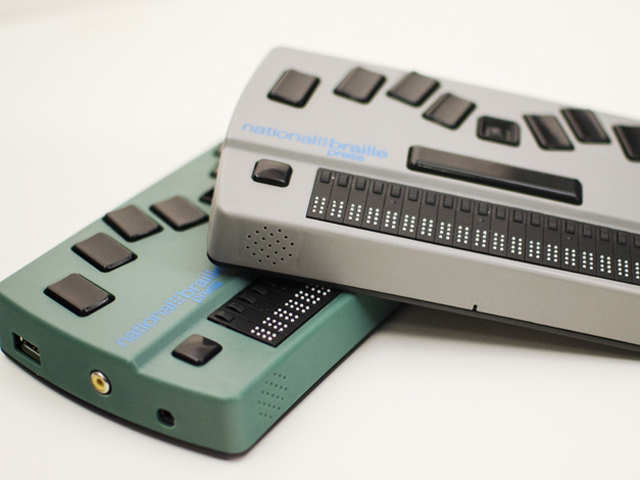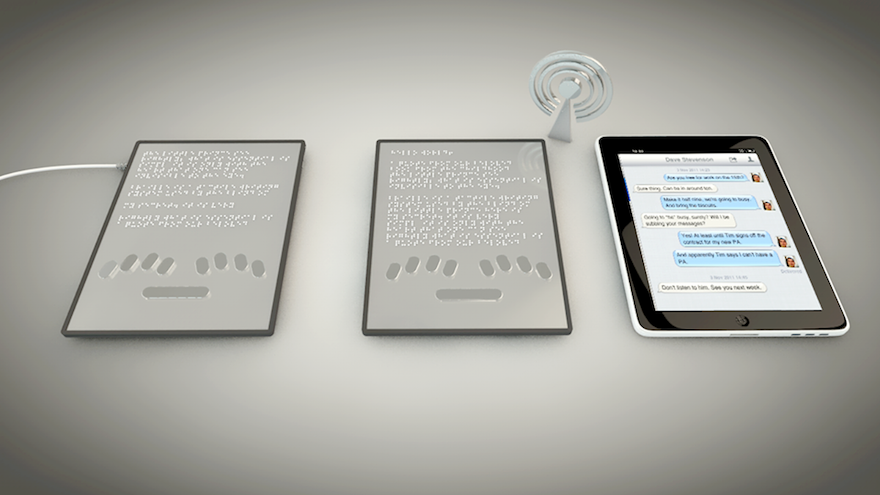Voice-Activated Assistive Devices: Empowering the Visually Impaired
Voice-Activated Assistive Devices: Empowering the Visually Impaired
Blog Article
Empowering Self-reliance With Assistive Technology for the Blind
The combination of assistive modern technology into the lives of people with aesthetic problems stands for a substantial innovation in advertising self-reliance and self-sufficiency. From innovative display viewers to sophisticated smart walking canes, these devices not only boost everyday navigation and communication yet also equip customers to involve meaningfully in different elements of life. As we discover the myriad benefits and real-world applications of these technologies, it ends up being crucial to take a look at the underlying factors that add to their performance and the possibility for future growths in this crucial field.
Review of Assistive Modern Technology

The growth of assistive technology is based in concepts of inclusivity and empowerment. Technologies in software application, hardware, and sensory enhancements give individuals with choices tailored to their specific demands. From screen visitors that convert text to speech, to tactile devices that communicate information through touch, these devices transform the means individuals involve with their environments.
In enhancement to sensible applications, assistive innovation fosters higher social addition and involvement in different markets, consisting of education and work (Wearable technology for low vision). As r & d proceed to develop, the potential for assistive modern technology to further boost the lives of visually impaired people continues to be encouraging, leading the way for a more equitable culture where everyone can grow
Sorts Of Assistive Instruments
A selection of assistive tools have actually arised to sustain people with aesthetic impairments, each made to fulfill particular demands and enhance everyday performance. These gadgets range from low-tech options to modern advancements, offering varied options for customers.
Low-tech devices consist of magnifiers and large-print materials that assist in analysis and writing. Braille tools, such as Braille stylus pens and slates, make it possible for tactile reading and interaction. Alignment and wheelchair aids, like white walking canes, help users navigate their atmosphere securely.
On the greater end of the range, digital magnifying systems and display readers offer considerable support. Digital magnifiers permit customers to enlarge text and photos on screens, while screen readers convert electronic material into manufactured speech, promoting accessibility to info on computer systems and smartphones.
Smartphone applications also play a critical role, providing attributes like text recognition and navigating help. Wearable modern technology, such as clever glasses furnished with enhanced reality, is becoming a promising device to enhance situational understanding.
Advantages of Assistive Technology
The integration of assistive technology considerably enhances the lifestyle for individuals with visual problems. These modern technologies equip individuals by promoting freedom, enabling them to navigate their settings better and carry out day-to-day tasks with higher ease. Screen viewers and magnifying software enable people to access digital information, cultivating expert and academic opportunities that may have formerly been out of reach.
Additionally, assistive tools such as wise canes and GPS applications provide real-time navigation assistance, improving wheelchair and security. This boosted autonomy not just enhances self-esteem however also motivates social involvement, allowing users to participate more totally in their communities.
Assistive modern technology also helps with communication, assisting users connect with others via voice acknowledgment and text-to-speech applications. This capability is essential for keeping partnerships and accessing essential info.
In addition, the personalization options offered with lots of assistive modern technologies guarantee that customers can tailor tools to their specific requirements, even more enhancing usability and effectiveness. On the whole, the advantages of assistive modern technology for people with visual disabilities are extensive, promoting a more inclusive society where everybody can seek their objectives and aspirations.
Study and Success Stories
Highlighting the transformative impact of assistive technology, many situation researches show just how people with visual problems have actually successfully integrated these devices into their day-to-days live. One engaging example involves an university student that utilized screen analysis software application to navigate academic materials and online sources properly. This innovation not only promoted her education and learning yet also enhanced her confidence in joining conversations single vision glasses and group tasks.
Another case study includes a specialist that utilizes a mobile phone application created for navigation and object acknowledgment. By utilizing this application, he has reclaimed freedom in both his personal and workplace, permitting him to commute separately and engage with coworkers better.
Additionally, a retired person shared her experience with braille e-readers, which allowed her to access a substantial range of literature and remain connected with her community through book clubs.
These success tales emphasize the vital role of assistive technology in fostering freedom, enhancing lifestyle, and advertising social assimilation for people with visual impairments (Screen readers for the blind). By accepting these ingenious devices, individuals can get over challenges click this link and seize opportunities that add to their individual and expert gratification

Future Trends in Assistive Modern Technology
Innovation in assistive technology is poised to redefine the landscape of assistance for individuals with visual disabilities. Arising fads stress the integration of fabricated knowledge (AI) and maker learning, which boost the functionality of tools that assist with navigation and info accessibility. For example, AI-driven applications are now with the ability of interpreting visual data in real-time, enabling customers to involve with their environment much more independently.
Additionally, the development of wearable technology is advancing rapidly. Smart glasses outfitted with increased reality (AR) can give audio summaries of surroundings, changing exactly how users interact with public areas. These tools not just promote autonomy yet likewise foster social incorporation.
In Addition, the Web of Things (IoT) is making homes smarter, enabling seamless connection in between assistive tools and daily devices. This connectivity equips users by allowing automated actions and voice-activated controls customized to private demands.
Final Thought
In conclusion, assistive modern technology plays a critical function in equipping people with aesthetic problems by enhancing their self-reliance and engagement with their environments. The diverse variety of applications and devices readily available not just assists in navigation and communication yet glasses for computer eye strain also promotes social assimilation and possibilities for specialist and individual growth. As advancements continue in this field, the potential for boosting the lifestyle for those with visual impairments will certainly expand, promoting better freedom and empowerment.

Report this page